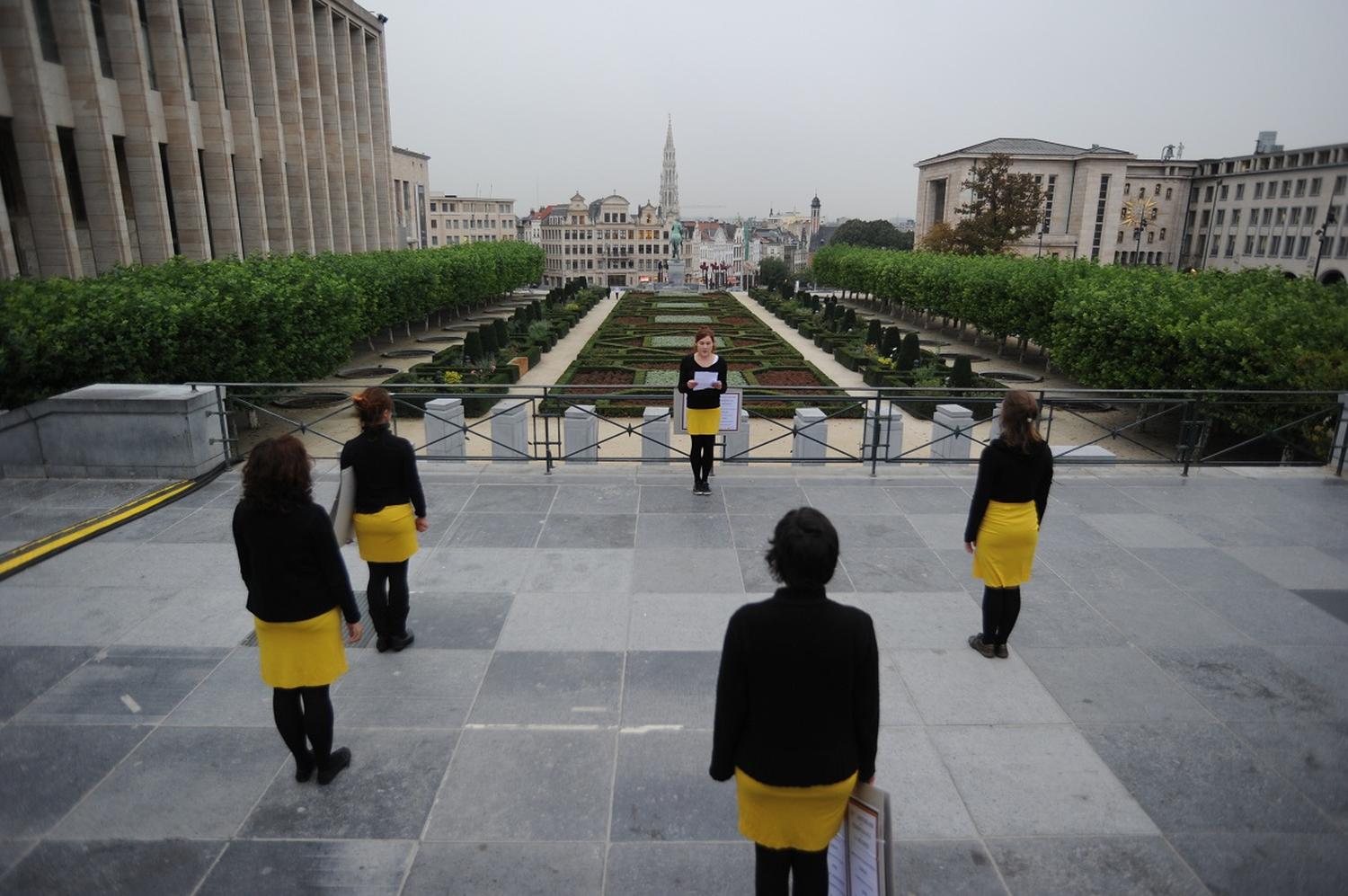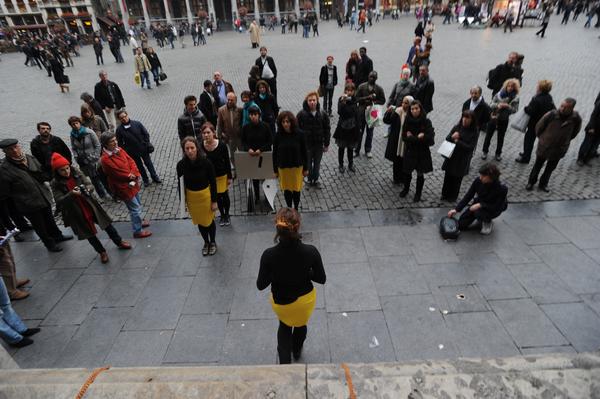
Public Movement
- workshop
Public Movement in Brussels
“Public Movement studies and creates public choreographies. What is the “public” and which choreographies does it perform? When we look at folk dances, demonstrations or street fights, we can notice they all have repetitive choreographic elements. Who invented those movements? Who is the choreographer?

During the workshop we will check what kind of physical knowledge exists in our body. What is the dance of a citizen? How does the State perform?

Together, we will explore the different possibilities of moving as a group in public space, experimenting with notions such as conflict, the political body and the embodiment of politics. We will observe and construct political situations while studying together moments in the political geography of Brussels: past, present and future. We will ask ourselves what are the physical manifestations of politics and the political in the specific time and place we are at. Reflecting on a geopolitical map of Brussels, we will identify the socially charged spots of the city.
What is the responsibility of the artist? What is to be done? ”

Public Movement
Public Movement explores the political and aesthetic possibilities residing in a group of people acting together. The movement operates in public spaces, studies and creates public choreographies, forms of social order, overt and covert rituals. Among Public Movement's actions in the past and in the future: manifestations of presence, fictional acts of hatred, new folk dances, synchronized procedures of movement, spectacles, marches, inventing and reenacting moments in the life of individuals, communities, social institutions, peoples, states, and of humanity.
Public Movement is a representative group, a selected team of artists based in Tel-Aviv, with the prospect of becoming a global mass movement.